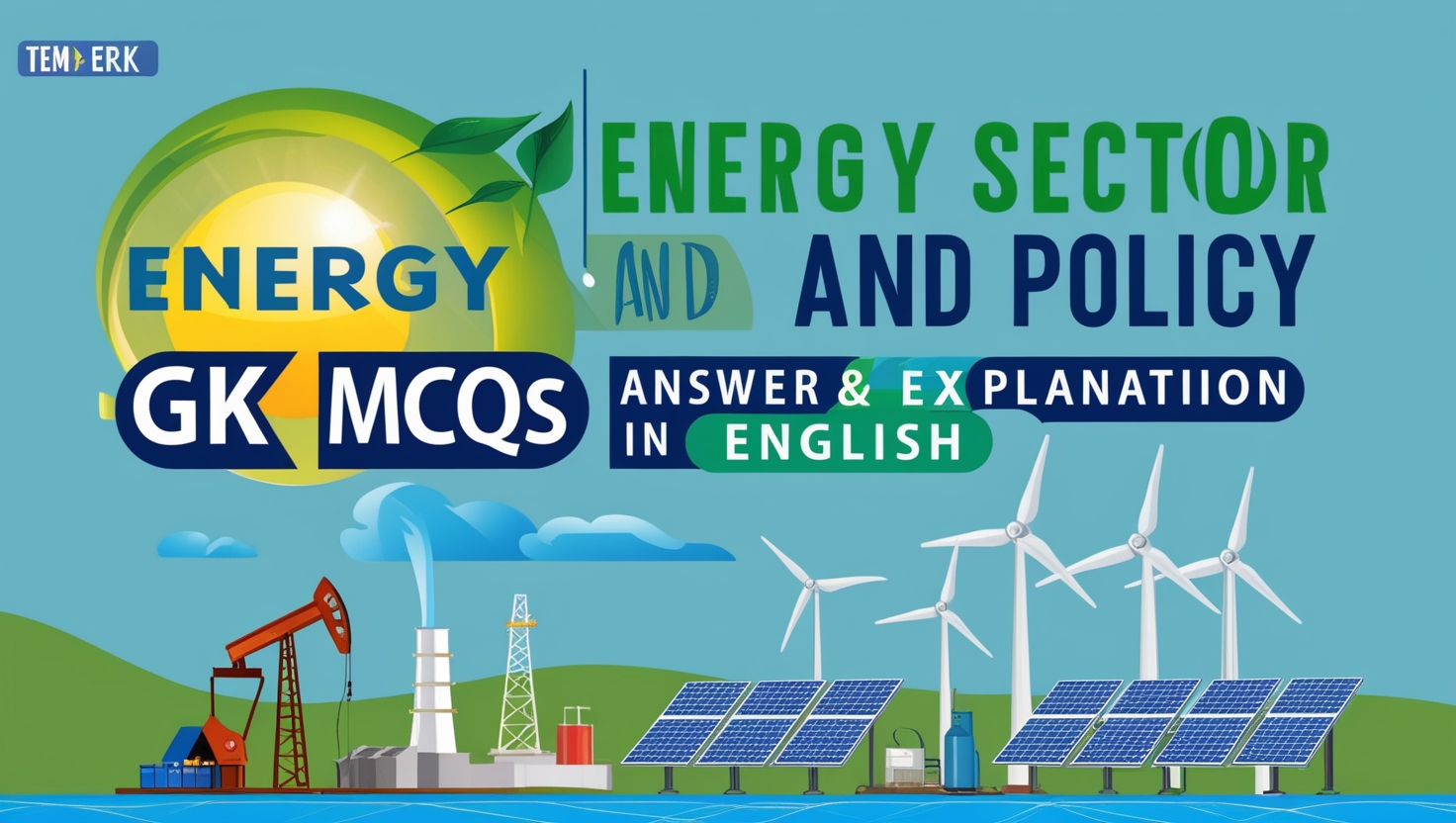
The Energy Sector and Policy is a critical area influencing global economies and sustainable development. Understanding its nuances is essential for students, professionals, and enthusiasts alike. This article, titled Energy Sector and Policy GK MCQs With Answer & Explanation in English provides a comprehensive collection of multiple-choice questions designed to enhance your knowledge of this dynamic field.
Dive into these MCQs with detailed answers and explanations to build a solid foundation in energy policies, technologies, and market trends.
1. Which among the following is called the financial backbone of Indian Power Sector?
- Power Grid Corporation of India Ltd.
- Power Finance Corporation
- Damodar Valley Corporation
- Satluj Jal Vidyut Nigam Ltd.
Show Answer
Answer: Power Finance Corporation
Power Finance Corporation Ltd. (PFC) is a central public sector undertaking owned by the Ministry of Power, Government of India. Established in 1986, PFC serves as a vital financial institution supporting the Indian power sector. It plays a pivotal role in funding and facilitating investments in power generation, transmission, and distribution projects, contributing significantly to the growth and development of the country’s power infrastructure.
2. In which year was the Ministry of Non-conventional Energy Resources changed into the Ministry of New & Renewable Energy?
- 2002
- 2004
- 2006
- 2008
Show Answer
Answer: 2006
The Ministry of Non-conventional Energy Sources was initially established in 1992 to focus on alternative and renewable energy solutions. In October 2006, it was renamed the Ministry of New & Renewable Energy (MNRE), signifying its expanded scope and commitment to promoting sustainable and renewable energy sources in India. MNRE is responsible for formulating and implementing policies and programs to harness renewable energy for power generation and other applications.
3. Which among the following sectors uses the maximum commercial energy in India?
- Household sector
- Agriculture
- Industries
- Transport
Show Answer
Answer: Industries
The industrial sector is the largest consumer of commercial energy in India. Within this sector, the majority of annual energy consumption is allocated to manufacturing, followed by industries such as mining, construction, and agriculture. This highlights the significance of the industrial sector in India’s energy usage.
4. Which among the following coal producers of India is outside the Coal India Ltd?
- Southern Eastern Coalfields (Bilaspur)
- Bharat Coking Coal (Dhanbad)
- Mahanadi Coalfields (Sambalpur)
- Singareni Collieries Company (Telangana)
Show Answer
Answer: Singareni Collieries Company (Telangana)
SCCL is a coal mining company in India, jointly owned by the Government of Telangana and the Government of India. The ownership structure is divided on a 51:49 equity basis, with the Telangana government holding the majority share. SCCL plays a significant role in coal production and supply, contributing to the energy needs of the country.
5. Which state in India has the largest coal reserves?
- Jharkhand
- Odisha
- Madhya Pradesh
- Rajasthan
Show Answer
Answer: Jharkhand
Jharkhand, a state in eastern India, boasts the largest estimated coal reserves in the country, accounting for approximately 38% of the total coal reserves in India. These coal reserves are crucial for the energy sector, supporting power generation and industrial activities.
6. The National Institute of Solar Energy is headquartered at?
- Gurugram
- New Delhi
- Bengaluru
- Mumbai
Show Answer
Answer: Gurugram
NISE is headquartered in Gurugram, Haryana. It serves as a research and development institute dedicated to various aspects of solar energy, including testing, certification, standardization, and allocation of resources for solar energy-related projects. NISE is pivotal in advancing solar energy technologies and applications in India.
7. The National Solar Mission was launched in the year 2010. In 2010, what was the installed capacity of solar energy in India?
- 145 MW
- 176 MW
- 161 MW
- 138 MW
Show Answer
Answer: 161 MW
In 2010, when the National Solar Mission was launched, India’s installed solar energy capacity was 161 MW. Over the years, India has made substantial progress in expanding its solar energy infrastructure. As of September 30, 2022, India’s solar installed capacity has grown significantly to reach 60.813 GW.
8. Solar Energy Corporation of India Limited was established in?
- 2010
- 2009
- 2011
- 2014
Show Answer
Answer: 2011
SECI was established in 2011 with the primary objective of implementing the National Solar Mission. It plays a pivotal role in promoting and facilitating solar energy projects and investments in India.
9. National Wind Resource Assessment Programme was launched in?
- 1990
- 1985
- 1989
- 1982
Show Answer
Answer: 1985
India initiated the National Wind Resource Assessment Programme in 1985 to identify suitable locations for wind farms across the country. This program aims to harness wind energy as a renewable energy source.
10. Muppandal Wind Farm is located in which state?
- Kerala
- Tamil Nadu
- Karnataka
- Andhra Pradesh
Show Answer
Answer: Tamil Nadu
The Muppandal Wind Farm, located in the Kanyakumari District of Tamil Nadu, stands as the largest onshore wind farm in India. It boasts an impressive installed capacity of 1500 MW, making a significant contribution to India’s wind energy generation.







